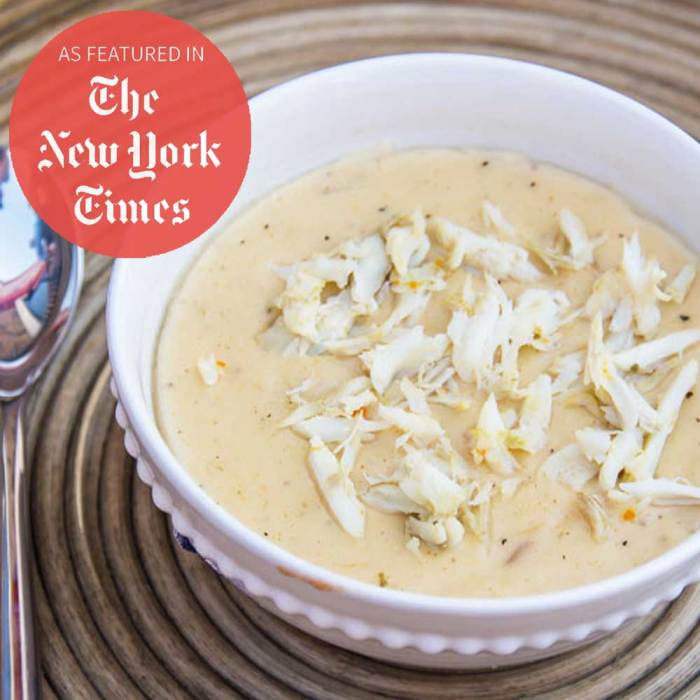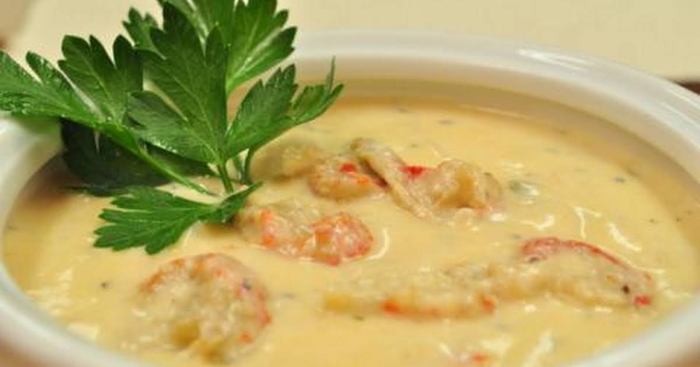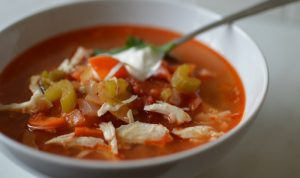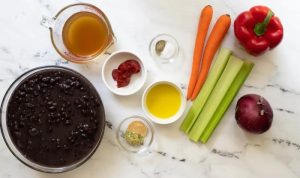Crab Bisque: A Critical Culinary Exploration: Best Crab Bisque Soup Recipe
Best crab bisque soup recipe – The seemingly simple crab bisque belies a complex culinary landscape. This dish, a testament to both technique and ingredient quality, offers a fascinating case study in the politics of taste, from the ethical sourcing of ingredients to the subtle nuances of flavor manipulation. This exploration dissects the creation of exceptional crab bisque, exposing the power dynamics inherent in its production and consumption.
Recipe Variations: A Comparative Analysis of Crab Bisque Styles
Three distinct styles of crab bisque—classic French, New England, and Californian—highlight the vast culinary interpretations possible. Each showcases unique flavor profiles, reflecting regional preferences and ingredient availability. These variations are not simply stylistic choices; they represent different culinary philosophies and power structures within the food industry.
| Recipe Name | Key Ingredients | Cooking Method | Notable Characteristics |
|---|---|---|---|
| Classic French Crab Bisque | Lump crab meat, heavy cream, dry sherry, finely diced shallots, butter, fish stock | Roux-based, slow simmering, finished with cream | Rich, luxurious, smooth texture, pronounced sherry notes |
| New England Crab Bisque | Mix of claw and lump crab meat, light cream, dry vermouth, celery, onions, vegetable stock | Simmered with aromatics, thickened with a cornstarch slurry | Slightly chunky texture, brighter flavor profile, less rich than French version |
| Californian Crab Bisque | Dungeness crab meat, coconut milk, lime juice, cilantro, ginger, vegetable broth | Simmered with aromatics, blended until smooth | Unique tropical twist, lighter and less creamy, emphasis on fresh herbs and citrus |
Ingredient Sourcing and Preparation: Deconstructing the Crab
The choice of crab meat significantly impacts the final product. Lump crab, prized for its delicate texture, often commands a higher price, reflecting a power imbalance in the seafood market. Backfin and claw meat offer more affordable alternatives, but require careful preparation to avoid a fishy taste. This section examines the ethical and economic dimensions of crab sourcing, along with best practices for preparation.
- Lump Crab Meat: The most desirable, with a sweet and delicate flavor.
- Backfin Crab Meat: More affordable, but requires careful cleaning to remove any cartilage.
- Claw Meat: Often stringy, best used in combination with other crab meats.
- Cleaning and Preparation: Thoroughly rinse crab meat, removing any shell fragments or cartilage. Avoid overcooking, as this can lead to a rubbery texture.
- Seafood Alternatives: While not a direct replacement, lobster, shrimp, or even scallops can be used to create a similar creamy bisque, though the flavor profile will differ significantly.
Mastering the Broth and Flavor Profile: The Foundation of Excellence
The broth is the heart of any successful crab bisque. The careful balance of aromatics—onions, garlic, celery—and the choice of stock (fish or vegetable) significantly influence the final taste. The creation of a roux, a mixture of butter and flour, provides the necessary thickening agent, requiring precise technique to avoid lumps and a gritty texture.
- Aromatic Base: Sautéing onions, garlic, and celery in butter until softened creates a foundational flavor base.
- Roux Creation: Melt butter, whisk in flour gradually, cook until lightly browned to avoid a raw flour taste. This step is crucial for achieving the desired thickness.
- Flavor Balancing: Seasoning is critical; salt, pepper, and other spices should be added gradually, tasting frequently to avoid over-seasoning. A touch of white wine or dry sherry can add complexity.
Enhancing the Bisque: Texture and Garnishes: The Art of Presentation, Best crab bisque soup recipe

Source: cameronsseafood.com
The texture of the bisque, whether creamy, velvety, or slightly chunky, is a crucial aspect of its appeal. The choice of garnishes elevates the dish from a simple soup to a culinary masterpiece. The presentation itself speaks volumes about the chef’s skill and attention to detail.
- Texture Control: Blending determines the smoothness; for a chunkier bisque, some crab meat can be left unblended.
- Garnish Options: Fresh herbs (chives, parsley), croutons, sherry cream, a swirl of cream, or even a sprinkle of paprika can enhance both taste and visual appeal.
- Visual Enhancements: A simple garnish can transform the presentation. Consider a contrasting color, a delicate herb sprig, or a carefully placed crouton.
Serving Suggestions and Pairings: Completing the Culinary Experience
Serving temperature, accompanying bread, and wine pairings all contribute to the overall dining experience. These choices are not arbitrary; they represent a careful orchestration of flavors and textures, designed to create a harmonious and memorable meal.
| Bisque Style | Serving Suggestion | Accompanying Bread | Wine Pairing |
|---|---|---|---|
| Classic French | Warm | French baguette slices | Dry white wine (e.g., Chardonnay) |
| New England | Warm | Cornbread | Crisp white wine (e.g., Sauvignon Blanc) |
| Californian | Slightly chilled | Grilled sourdough | Rosé wine |
Troubleshooting Common Issues: Navigating Culinary Challenges

Source: googleusercontent.com
Even experienced cooks encounter challenges when making crab bisque. Understanding the common problems—grainy texture, bland flavor, overly thick consistency—and their solutions is essential for consistently producing a high-quality dish. The quality and type of crab meat significantly influence the outcome, requiring adjustments in technique and seasoning.
- Grainy Texture: Caused by improperly blended ingredients or insufficiently cooked roux. Re-blend thoroughly or add more liquid.
- Bland Flavor: Insufficient seasoning or weak stock. Adjust seasonings and consider adding a touch of lemon juice or sherry.
- Overly Thick Consistency: Too much roux or insufficient liquid. Add more stock or cream to thin the bisque.
- Adjustments Based on Crab Meat: Lower-quality crab meat may require more seasoning or aromatics to compensate for a less intense flavor.
Common Queries
Can I freeze crab bisque?
Absolutely! Cool completely before freezing in airtight containers for up to 3 months.
What if my bisque is too thin?
Simmer uncovered to reduce the liquid. You can also whisk in a cornstarch slurry (1 tbsp cornstarch mixed with 2 tbsp cold water) to thicken.
What if my bisque is too thick?
Stir in a little warm cream or broth to thin it out to your desired consistency.
Can I use canned crab meat?
While fresh is best, canned crab meat works in a pinch. Just be sure to drain it well and rinse to remove excess salt.






